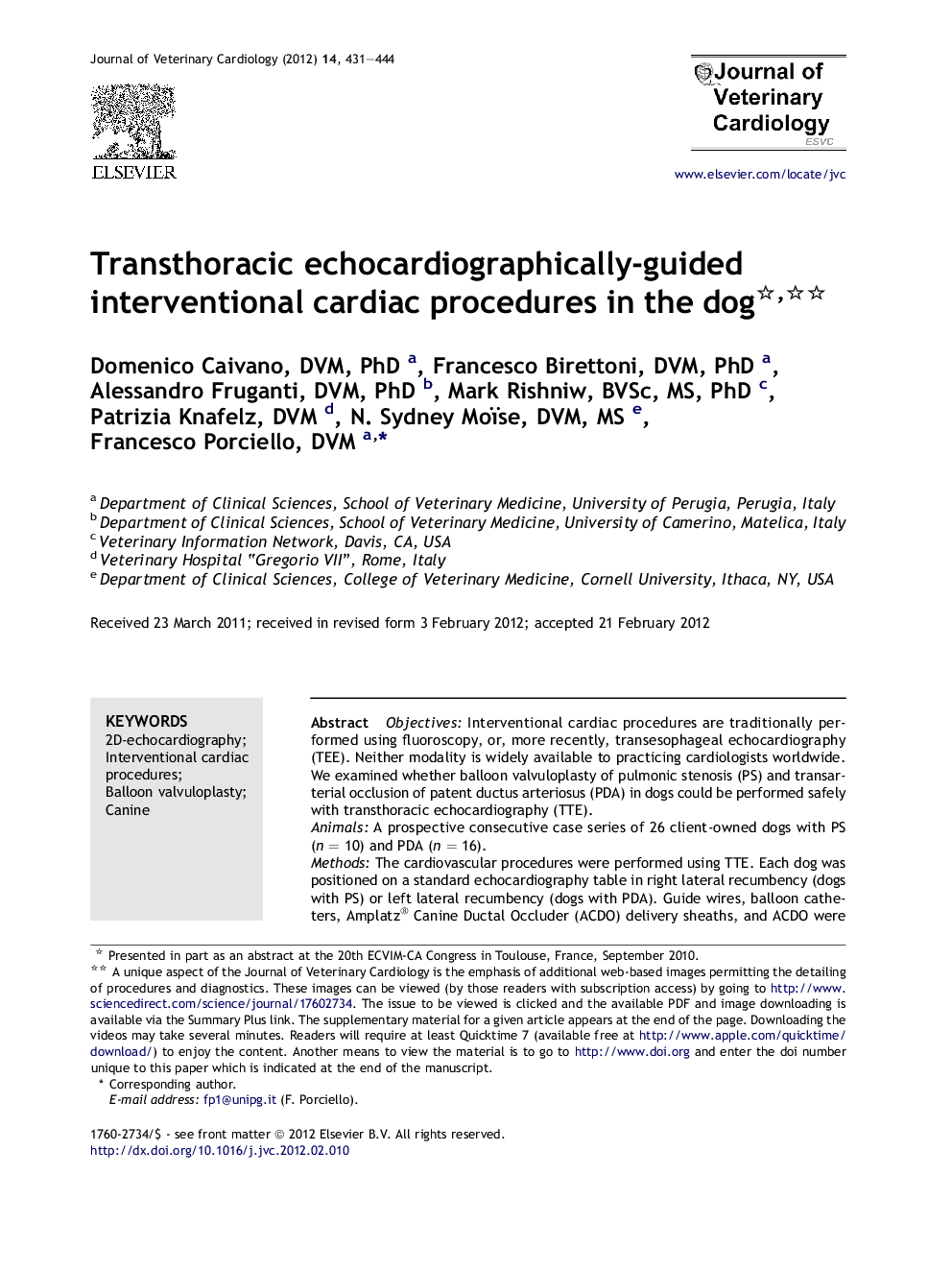| Article ID | Journal | Published Year | Pages | File Type |
|---|---|---|---|---|
| 2400194 | Journal of Veterinary Cardiology | 2012 | 14 Pages |
ObjectivesInterventional cardiac procedures are traditionally performed using fluoroscopy, or, more recently, transesophageal echocardiography (TEE). Neither modality is widely available to practicing cardiologists worldwide. We examined whether balloon valvuloplasty of pulmonic stenosis (PS) and transarterial occlusion of patent ductus arteriosus (PDA) in dogs could be performed safely with transthoracic echocardiography (TTE).AnimalsA prospective consecutive case series of 26 client-owned dogs with PS (n = 10) and PDA (n = 16).MethodsThe cardiovascular procedures were performed using TTE. Each dog was positioned on a standard echocardiography table in right lateral recumbency (dogs with PS) or left lateral recumbency (dogs with PDA). Guide wires, balloon catheters, Amplatz® Canine Ductal Occluder (ACDO) delivery sheaths, and ACDO were imaged by standard echocardiographic views optimized to allow visualization of the defects and devices.ResultsProcedures were performed successfully without major complications in 20 dogs. In 2 dogs (German shepherds) with Type III PDA, ACDO placement was unsuccessful; 2 other German Shepherds were excluded from the procedure because their ductal diameters, measured echocardiographically, exceeded the limits of the maximal ACDO size. Two dogs weighing ≤3.5 kg had suboptimal echocardiographic visualization of the PDA and were considered too small for safe ACDO deployment. All intravascular devices at the level of the heart and great vessels appeared hyperechoic on TTE image and could be clearly monitored and guided in real-time.ConclusionsWe have demonstrated that TTE monitoring can guide each step of pulmonic balloon valvuloplasty and PDA occlusion without fluoroscopy.
